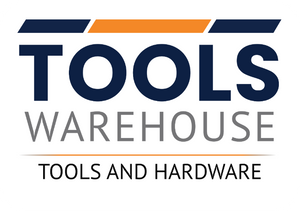An air blower machine operates by using a rotating impeller. It is also known as a rotor. It helps to generate a vacuum. This vacuum effect induces a flow of air into the blower. Air enters through the centre of the impeller, and from there, it encounters rotating blades that divide and direct the airflow. As a result of centrifugal force, both the speed and volume of the air stream are significantly increased within the blower's housing.
In this blog, you’ll learn everything you need to know about what an air blower is, what is air blower is used for, and how you can get the most out of your air blower machine from Tools Warehouse.
Types of Air Blowers
Air blowers might seem like straightforward tools. However, selecting the right type for your specific purpose is important. Using an unsuitable blower can lead to underperformance, increasing energy consumption and higher operational costs.
Air blowers come in several types, distinguished by their impeller or fan design. These include:
● Forward Curved Centrifugal Blowers
● Backwards Inclined Aerofoil Blowers
● Backwards Curved Centrifugal Blowers
● Radial Blowers
● Axial Air Blowers
Each design has unique airflow characteristics suited to different tasks, so making the right choice ensures both efficiency and reliability in your operations.
Know More About: How to Choose the Right Air Blower.
Let’s dive into the advantages and uses of air blower machines.
1. Forward Curved Centrifugal Air Blowers
Centrifugal air blowers are an incredible innovation. These are capable of moving massive volumes of air at low pressure, and they can save you up to 90% compared to compressed air! The air velocity in a blower is set at a specific rate (measured in metres per second). These centrifugal air blowers operate efficiently at lower pressures, allowing them to use less air while still producing that powerful, high-velocity airstream!
2. Backwards Inclined Aerofoil Blowers
Backwards inclined aerofoil blowers, like the belt-driven EP10A, feature a unique impeller design. The rotor is notably flatter, which contributes to a more compact form factor. These blowers are engineered to deliver medium air volumes at high pressure. The EP10A, in particular, boasts a sophisticated impeller design paired with advanced belt technology, resulting in reduced friction.
3. Backward Curved Centrifugal Blowers
Like forward-curved models, backward-curved blowers deliver medium power and pressure. However, they feature a stronger impeller with fewer, steeper blades. Instead of cutting the air, the blades flick it, allowing these blowers to move more air at lower pressure, offering better performance with less power when needed.
They're also more energy-efficient and quieter, making them ideal for air conditioning systems and data centre cooling.
4. Radial Blowers
These blowers are designed to be exceptionally durable, making them ideal for marine and offshore applications as well as for use in extreme temperature environments. While they require some maintenance, their robust performance makes them a reliable choice for demanding tasks.
The design features impeller blades that extend outward from the centre, resembling the paddles found on traditional Mississippi steamboats. Typically, these blades are reinforced with protective layers, which enhance their strength and improve overall air movement efficiency.
5. Axial Air Blowers
The impellers on these high-volume, low-pressure units resemble desk fans and are ideal for cost-effectively cooling large amounts of air. You can typically find them in applications like wind tunnels and certain HVAC systems, though not in large ducted setups due to their low-pressure nature. They’re also effective for destratification in buildings, where they help blend air and prevent warm strata from getting trapped near the ceiling.
Also Read: Types of Drill Machines & their Uses
Components of an Air Blower Machine
To get a better sense of how air blower works, it helps to understand its key components:
● Motor: Powers the impeller and drives the airflow. Motors can be AC (corded) or DC (battery-powered).
● Impeller/Fan Blade: This component increases the speed and pressure of the incoming air.
● Housing: Encases the internal components and directs the airflow efficiently.
● Air Intake Filter: Captures dust and particles to protect the internal mechanism.
● Nozzle: Directs airflow and determines how focused or broad the air stream will be.
● Speed Control (optional): Many blowers come with adjustable speeds for greater control over airflow.
Also Read: 10 Surprising Uses of a Vacuum Cleaner Beyond Cleaning Floors
Choosing the Right Air Blower at Tools Warehouse
Not all blowers are created equal. When choosing one, keep these factors in mind:
● Power Source: Corded models offer continuous power, while cordless models offer convenience and portability.
● Air Speed: Measured in km/h or MPH—higher speeds offer more forceful airflow.
● Air Volume (CFM): Cubic Feet per Minute measures how much air the blower moves, ideal for larger areas.
● Weight and Ergonomics: Choose a lightweight model with a comfortable grip for longer usage periods.
● Noise Level: Some models are designed to operate more quietly for indoor use.
Our expert team at Tools Warehouse can help match you with the ideal blower for your workspace and task.
Also Read: Rotary Hammer Vs Hammer Drill: Differences Explained
It’s a Wrap Up
An air blower machine is an essential tool used for cleaning, drying, and removing debris in various industries. It operates by creating a high-speed flow of air, which is directed through a nozzle to blow away dust, leaves, or other particles. Air blower machines are commonly used in warehouses, construction sites, and workshops for efficient cleaning. Understanding how air blower works helps in maximising its effectiveness for maintenance and safety in industrial environments.
Discover top-quality air blowers at Tools Warehouse!

